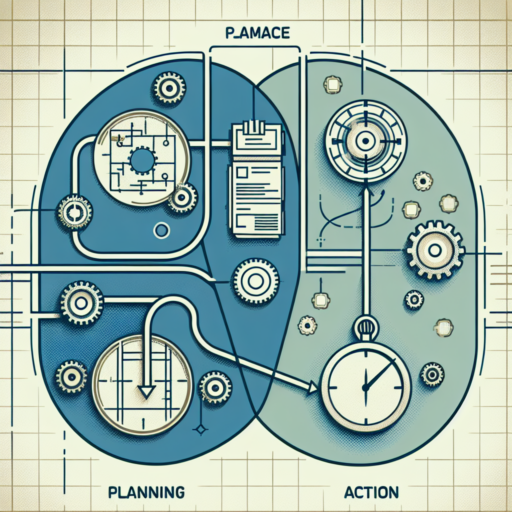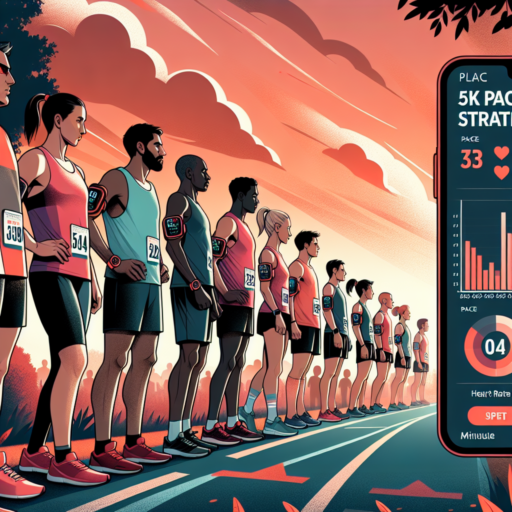Understanding Pace Strategy in Running and Endurance Sports
Developing an effective pace strategy is fundamental for athletes in running and endurance sports, where both distance and time play critical roles. Understanding how to distribute one’s energy efficiently throughout a race can make the difference between a personal best and a performance that falls short of an athlete’s potential. This approach to pacing not only improves race outcomes but also enhances overall training effectiveness.
Key Components of an Effective Pace Strategy
An effective pace strategy in running and endurance sports hinges on several core principles. Firstly, knowing one’s body and its limits is essential, as is the ability to gauge exertion levels reliably throughout the event. This entails a combination of personal experience, physiological metrics (such as heart rate and VO2 max), and perhaps most importantly, the mental resilience to adjust pace in response to the body’s signals. Secondly, environmental conditions significantly influence pace strategy. Factors such as temperature, altitude, and terrain can dictate adjustments in effort and expectations. Lastly, race dynamics, including competitor strategies and pacing, must also be considered, requiring athletes to remain flexible and adapt their strategies on the fly.
Practical Tips for Implementing Pace Strategy
To implement a successful pace strategy, athletes should focus on structured training sessions designed to simulate race conditions. This involves long runs at a planned race pace, interval training to improve speed and recovery, and tempo runs to enhance metabolic efficiency. Incorporating variability in training not only prepares the body for the physical demands of race day but also conditions the mind for the tactical aspects of pacing. Regularly monitoring progress and making data-driven adjustments is paramount for refining one’s strategy and setting realistic race day goals.
In essence, mastering pace strategy in running and endurance sports is a complex but rewarding challenge. It requires a nuanced understanding of one’s physical and psychological capacities, a keen awareness of the competitive and environmental context, and a commitment to continuous improvement through targeted training and strategic planning. By emphasizing these elements, athletes can optimize their performance, ensuring they compete at their best when it matters most.
The Importance of a Well-Planned Pace Strategy
Understanding The Importance of a Well-Planned Pace Strategy is crucial for athletes and coaches aiming to maximize performance in competitive environments. A strategic approach to pacing not only helps in sustaining energy levels throughout the event but also in achieving personal bests and benchmarks. This concept is not limited to physical endurance sports but applies universally across various activities where energy management is key to success.
At the heart of a successful pace strategy lies the ability to meticulously balance effort and energy expenditure. Without this, athletes risk early exhaustion or finishing with excess energy, suggesting that their initial pace was too conservative. The development of a pacing plan involves understanding an individual’s capacity, the demands of the event, and real-time adjustments based on conditions and competition. It’s a delicate balance that requires both science and intuition to master.
Incorporating technology and data analytics has revolutionized how pace strategies are developed and executed. Tools like GPS watches and power meters provide real-time feedback, allowing for micro-adjustments to be made during the competition. This level of precision ensures that athletes can compete at their optimum, making informed decisions on when to conserve energy and when to make their move. Consequently, the role of technology in pacing cannot be overstated, highlighting its importance in contemporary sports training and competition.
Top Techniques for Developing an Effective Pace Strategy
Having an effective pace strategy is crucial for athletes, project managers, and professionals alike. It’s the key to maintaining consistency, maximizing productivity, and achieving long-term goals without succumbing to burnout. Understanding how to set and maintain a steady pace can differentiate between success and failure. In this context, several techniques can be employed to ensure that your pace strategy is not just a concept, but a practical tool for success.
Understand Your Personal or Team Capacity
First and foremost, knowing your limits is essential. Whether it’s running a marathon or managing a complex project, understanding your or your team’s capacity is the initial step in developing a pace strategy that’s realistic and sustainable. It involves assessing physical capabilities, mental stamina, resources available, and existing commitments. By having a clear understanding of these elements, it’s possible to set a pace that is challenging yet achievable, ensuring long-term endurance and success.
Set Clear, Achievable Milestones
Another critical aspect is to break down the overarching goal into smaller, manageable milestones. This segmentation allows for more precise pace setting and adjustments as required. It ensures progress is measurable and motivation remains high. Regularly assessing advancement towards these milestones also provides opportunities for recalibration of the pace, ensuring it remains aligned with capabilities and goals. This adaptability is crucial for maintaining momentum and avoiding burnout or stagnation.
Lastly, incorporating periodic rest and recovery periods into your pace strategy cannot be overstressed. Just as important as the periods of activity, these downtimes allow for physical and mental recuperation, preventing burnout and fostering sustainability in long-term endeavors. Balancing work or physical exertion with adequate rest embodies the essence of an effective pace strategy, paving the way for sustained performance and success.
Common Mistakes to Avoid in Pace Strategy Planning
In the realm of strategic planning, particularly when it comes to pacing your strategy, several common pitfalls can significantly disrupt the effectiveness of your plans. Understanding these pitfalls is vital for creating a robust and flexible strategy that not only meets your current needs but is also adaptable for future unforeseen changes. Below, we will delve into some of these common mistakes and share insights on how to steer clear of them.
Ignoring the Importance of Flexibility
One critical oversight in pace strategy planning is the lack of flexibility. It’s essential to recognize that the business environment is ever-changing and that rigid strategies can quickly become obsolete. Incorporating flexibility allows your organization to adapt to market shifts, technological advancements, and unexpected challenges, ensuring that your strategy remains relevant and effective over time.
Underestimating Resource Constraints
Another common misstep is underestimating the resources required to implement the strategy at the planned pace. Overly ambitious plans without a realistic assessment of available resources, including time, manpower, and financial assets, can lead to burnout and diminished morale among team members. It’s crucial to have a clear understanding of your resource capabilities and plan accordingly to avoid stretching your team too thin.
Failing to Communicate the Strategic Vision
A fundamental aspect that is often overlooked is the importance of effectively communicating the strategic vision and pace throughout the organization. Without clear communication, team members may lack the necessary understanding and commitment to the strategic goals, leading to inconsistencies and inefficiencies in implementation. Ensuring everyone is on the same page is key to a cohesive and concerted effort towards achieving the strategic objectives.
How to Adjust Your Pace Strategy for Different Race Distances
Adjusting your pace strategy for different race distances is crucial for optimizing performance, reducing injury risk, and enhancing overall race experience. Different distances require unique approaches to pacing, as factors such as energy expenditure, endurance, and mental stamina vary significantly from one race length to another.
Understanding Energy Systems for Optimal Pacing
For shorter distances, such as the 5K or 10K, runners might focus on leveraging their anaerobic capacity, pushing harder for a sustained, intense effort. Conversely, marathon or ultramarathon distances rely heavily on aerobic energy systems, necessitating a pace that balances speed with the ability to maintain energy reserves over many hours. Assessing your training, including both speed work for shorter distances and endurance runs for longer events, is essential in calibrating the right pace strategy.
Adjustment Tactics for Different Distances
For a 5K or 10K: Start at a moderate pace and gradually increase your effort, aiming to expend your maximum energy in the final mile. This strategy takes advantage of a shorter, more intense energy expenditure profile.
For a Half Marathon or Marathon: Begin conservatively, focusing on maintaining a steady, manageable pace. As you near the race’s final third, evaluate your energy levels and consider modestly increasing your pace if you feel capable. This approach helps reserve energy for the crucial final miles without risking premature fatigue.
Ultra Distances: The key is pacing consistency, avoiding starting too fast, and managing energy reserves with a focus on steady endurance. Incorporating walking breaks or paced intervals can also optimize performance over extreme distances.Pace Strategy and Nutrition: Fueling for Optimal Performance
When approaching any form of endurance sport or physical challenge, understanding the symbiotic relationship between pace strategy and nutrition is paramount for achieving optimal performance. This concept encompasses more than just the physical act of moving at a consistent speed or consuming a set number of calories; it’s about the meticulous balance and timing of nutritional intake relative to an athlete’s pace and the demands of their specific activity.
Navigating Pace Strategy
The essence of a successful pace strategy lies in the careful modulation of effort throughout the event. Athletes must evaluate the course, weather conditions, and their own physiological capabilities to determine an optimal pacing plan. This approach ensures that energy reserves are judiciously conserved and expended, permitting the athlete to sustain effort over time. The integration of nutrition into this equation is critical, as the right nutrients, consumed at strategic times, can significantly boost endurance, concentration, and recovery.
Optimizing Nutritional Fueling
Effective nutritional fueling is all about precision and timing. Carbohydrates, fats, and proteins serve distinct roles in an athlete’s energy and recovery arsenal. For instance, while carbohydrates are often hailed as the go-to source for immediate energy, understanding when to incorporate fats and proteins can elevate an athlete’s performance and endurance. Electrolytes and hydration also play critical roles in maintaining optimal physiological function, especially in longer events where sweat loss can become a significant factor.
In conclusion, the interplay between pace strategy and nutrition is a sophisticated dance that can define the difference between success and failure in endurance sports. By tailoring these elements to the individual athlete’s needs and the specifics of the competition or challenge ahead, one can set the stage for exceptional performance outcomes.
Using Technology and Apps to Enhance Your Pace Strategy
In the realm of running and fitness, leveraging the latest technology and apps can significantly improve your pace strategy, making it easier to achieve and surpass your goals. The integration of these digital tools into your training regimen not only helps in tracking your progress but also provides invaluable insights for tweaking your strategy for better results.
Identify Your Current Pace
Before you can enhance your pace, understanding your current speed is crucial. Numerous running apps offer features that allow you to track your pace in real-time, giving you instant feedback on how fast you’re going. This immediate data is essential for setting realistic goals and accurately measuring improvement over time. By consistently monitoring your pace, you can identify patterns and determine what adjustments are needed to increase your speed and endurance.
Customizable Training Plans
One of the considerable advantages of using technology in your pace strategy is the ability to access customizable training plans. These plans can be tailored to suit your specific goals, whether you’re a beginner aiming for a 5k or an experienced runner focused on a marathon. Apps that offer this feature often include various workouts that target different aspects of running, such as speed intervals, long runs, and recovery days. Adapting your training plan based on the feedback from these apps can lead to significant improvements in your pace and overall performance.
In conclusion, the strategic use of technology and apps plays a pivotal role in enhancing your running pace. By offering real-time data, personalized training regimes, and a platform for tracking progress, these digital tools provide a comprehensive solution for runners looking to optimize their pace strategy. Embracing the digital age within your training can lead to marked improvements, helping you to achieve and exceed your running goals.
No se han encontrado productos.
Success Stories: How Elite Athletes Use Pace Strategy to Win
In the competitive world of elite sports, the difference between winning and losing often hinges on the strategic use of pace. Elite athletes and their coaches delve deep into the annals of sports science to master the art of pacing, a technique that has spelled the triumph for many. Notably, the application of a well-planned pace strategy allows athletes to conserve energy, optimize performance, and unleash their true potential at the crucial moments of their competitions.
Understanding the Impact of Pace on Performance
Pacing, as a strategy, is not about mere speed but the judicious distribution of energy throughout the event. This nuanced approach helps athletes avoid the pitfalls of early exhaustion or having excess reserves by the end, which indicates untapped potential. By analyzing success stories, it’s evident that victories often belong to those who not only excel in their physical capabilities but also in their ability to pace themselves wisely according to the distance, their competitors’ moves, and the game’s dynamics.
High-profile Success Stories
- Marathon Legends: The marathon offers profound insights into pacing strategies. Elite runners segment the race into phases, maintaining a consistent speed that aligns with their energy levels and the terrain. This tactic ensures they have the strength to surge past competitors, particularly in the final kilometers.
- Swimming Stars: Swimmers often use negative splitting, a pace strategy where they complete the second half of the race faster than the first. This approach is a testament to their strategic energy conservation and their ability to power through when it counts the most.
- Cycling Champions: In the realm of cycling, athletes employ pacing by drafting behind competitors to conserve energy before making a breakaway. This strategic positioning coupled with timed acceleration demonstrates the sophisticated use of pace in securing victory.
The concept of pacing is a universal key to success across various sports disciplines. Elite athletes continuously refine their pace strategies, drawing lessons from each performance. Whether it’s by setting the pace or knowing when to break away, the stories of these champions affirm the pivotal role of pacing in shaping winners. They show that beyond physical strength, it’s the mastery of pace strategy that propels athletes to the pinnacle of success.
Pace Strategy Training Plans for Beginners to Advanced Runners
Developing a successful pace strategy is crucial for runners of all levels, from beginners just stepping into the world of running to advanced athletes aiming to crush their personal records. Understanding and implementing a pace strategy training plan can markedly improve your running performance, efficiency, and overall enjoyment. This approach focuses on varying running paces according to specific workout goals, which helps in building endurance, speed, and race-day readiness.
For beginning runners, the importance of a structured pace strategy training plan lies in its ability to gradually introduce the body to the rigors of running. It helps in creating a strong foundation by combining slow, easy runs with occasional faster paced runs. This diversity in training ensures that a novice runner can progress safely, reducing the risk of injury and burnout, while steadily improving in performance.
On the other hand, advanced runners will find that an intricate pace strategy training plan is key to fine-tuning their performance and breaking into new personal bests. Advanced plans often incorporate a mix of tempo runs, interval training, and long, slow distance runs. This blend not only aids in enhancing aerobic capacity and speed but also in mastering pace control, which is vital for race day success.




